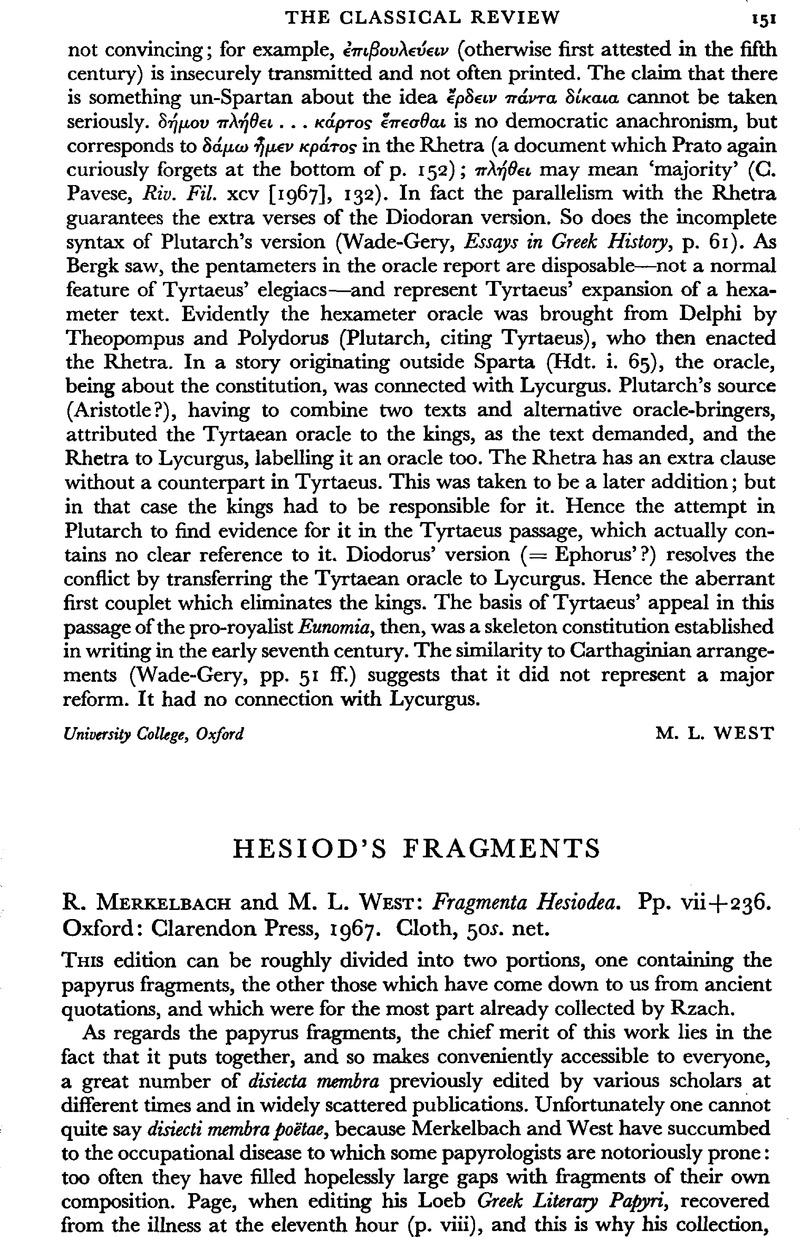No CrossRef data available.
Published online by Cambridge University Press: 27 February 2009

page 152 note 1 Cf. Lavagnini, B., Studi sul romanzo greco, Messina (1950), p. 209.Google Scholar
page 152 note 1 Cf. e.g. Lapp, , De Callimachi tropis et figuris (Diss. Bonn), pp. 59, 116Google Scholar; Preuss, Sprachgebr. Opp. i. 5 f.
page 152 note 2 Cf. e.g. Lapp, op. cit., pp. 142 f., Preuss, loc. cit.
page 152 note 3 Cf. e.g. Bühler, Europa, p. 213. Linefiguris structures like frs. 128 and 272. 3 are buds which developed very freely in the Oppiani and in Nonnus.
page 154 note 1 For the delight of pedants: Melampus either mixed pitch proper (black, δνοφερ⋯) with κεδρ⋯νη π⋯σση (Nic, Alex. 488), ‘resina laudatissima’ (Thes. s.v. κ⋯δρος, 1404 A) which smells pleasantly when burning, or mixed pitch with κ⋯δρον = θυμ⋯αμα, or simply added pitch to a pyre made of cedar-wood, a type of wood which produces a pleasant smell when burning (Od. v. 59 f. ⋯δμ⋯ κ⋯δρου).
page 154 note 2 For such variations cf. e.g. 293 = Il. v. 87 (indicated by Rzach, fr. 263), orfr. 228 = Il. ix. 432 (indicated by Rzach, fr. 156). Such variations are created by Hesiod especially in hexameter ends. The feature is, of course, common in Epic: cf. Ap. Rhod. iv. 251.
page 154 note 3 Cf., however, Pfeiffer's addendum.
page 154 note 4 In other words: the metaphorical ἔδειμαν (cf. Diejs–Kranz, in their apparatus) is part and parcel of the same metaphor to which the metaphorical boundary-mark belongs. Cf. Opp. Hal. iv. 26.
page 155 note 1 Cf. lastly West on Theog. 929, who repeats Ruhnken's error.
page 155 note 2 Cf. e.g. Ap. Rhod. i. 215, iii. 835. The word is of pure Homeric coinage; cf. Il. xxiii. 875.
page 156 note 1 As νἱεῖς in fr. 161.1 is defended by the variant in Il. xxiv. 604, so εὑρ⋯μενος in fr. 235.3 is defended by the variant εὔ:ρατο in Il. xvi. 472, which may be ancient.